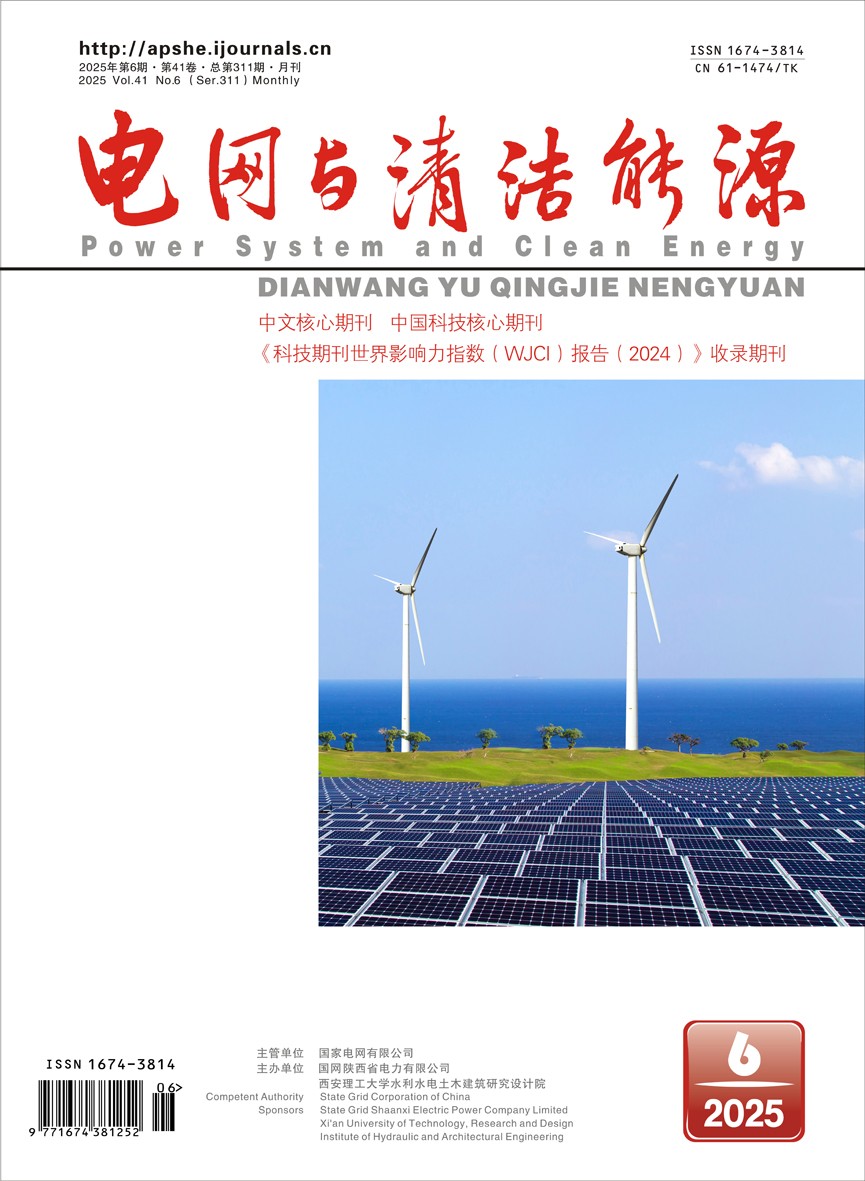| 极端大风天气事件对风力发电的影响 |
| 点此下载全文 |
| 引用本文:张元赫1,杨明1,王勃2,李梦林1,于一潇1.极端大风天气事件对风力发电的影响[J].电网与清洁能源,2025,41(5):95~103 |
| 摘要点击次数: 24 |
| 全文下载次数: 10 |
|
| 基金项目:国家电网有限公司总部管理科技项目资助(4000-202255055A-1-1-ZN) |
|
| 中文摘要:受全球气候变暖影响,大风极端天气的频率和强度逐年增加,由此导致风机停机、切出、发电功率突变等事故不断增多,给风电功率预测和电网安全稳定运行带来了巨大挑战。现阶段对大风天气的研究分析大多停留在单风机层面,多从物理层面分析风电出力异常变化原因。但是随着风电大规模接入电网,大风天气对电网运行的影响愈发显著,研究大风天气事件对风电场站出力的影响尤为重要。聚焦台风和寒潮大风天气事件,基于风速-功率曲线对大风产生机理和整体影响进行分析。基于高斯检索和灰色关联加权方法得到台风和寒潮大风天气下影响发电的关键气象影响因子。进一步扩展研究时空尺度,基于典型台风和寒潮大风实例,对风电场站功率-距离模型以及大风事件对风电场站的影响的实际情况进行分析。结果表明,现有预测模型未能识别大风导致的切机事件,结合切机情况做出针对性改进措施,导致极端天气预测误差较大。针对风电场站乃至省域范围内功率预测结果出现极端偏差的问题,提出了下一步探究方向和建议。 |
| 中文关键词:台风 寒潮大风 风电场站 关键气象影响因子 出力特性 |
| |
| A Study on the Impacts of Extreme Gale Events on Wind Power Generation |
|
|
| Abstract:The impact of global warming has led to an increase in the frequency and intensity of extreme wind weather events annually. This trend results in a rise in incidents such as wind turbine shutdowns, power outages, and sudden changes in power generation, posing significant challenges to wind power prediction and the safe, stable operation of power grids. Currently, research and analysis of strong wind weather predominantly focus on individual turbines, primarily examining the physical causes of abnormal changes in wind power output. However, with the large-scale integration of wind power into the grid, the impact of strong wind weather on grid operations has become increasingly significant. Therefore, it is crucial to study the effects of strong wind weather events on the output of wind farms. This paper focuses on typhoon and cold wave gale weather events. Initially, the generation mechanism and overall impact of gales are analyzed using the wind speed-power curve. Subsequently, employing the Gaussian search and grey correlation weighting method, the key meteorological factors influencing power generation during typhoons and cold waves are identified. By examining typical typhoons and cold wave gales, the power-distance model of wind farm stations and the actual impact of gale events on these stations are assessed. It is concluded that existing prediction models have failed to account for gale-induced blade failure events, leading to substantial errors in extreme weather prediction. Consequently, improvements are suggested based on blade conditions, and future research directions are proposed in light of the extreme deviations observed in power prediction results at both the wind farm and provincial levels. |
| keywords:typhoon cold wave and strong wind wind power cluster key meteorological factor output characteristics |
| 查看全文 查看/发表评论 下载PDF阅读器 |



